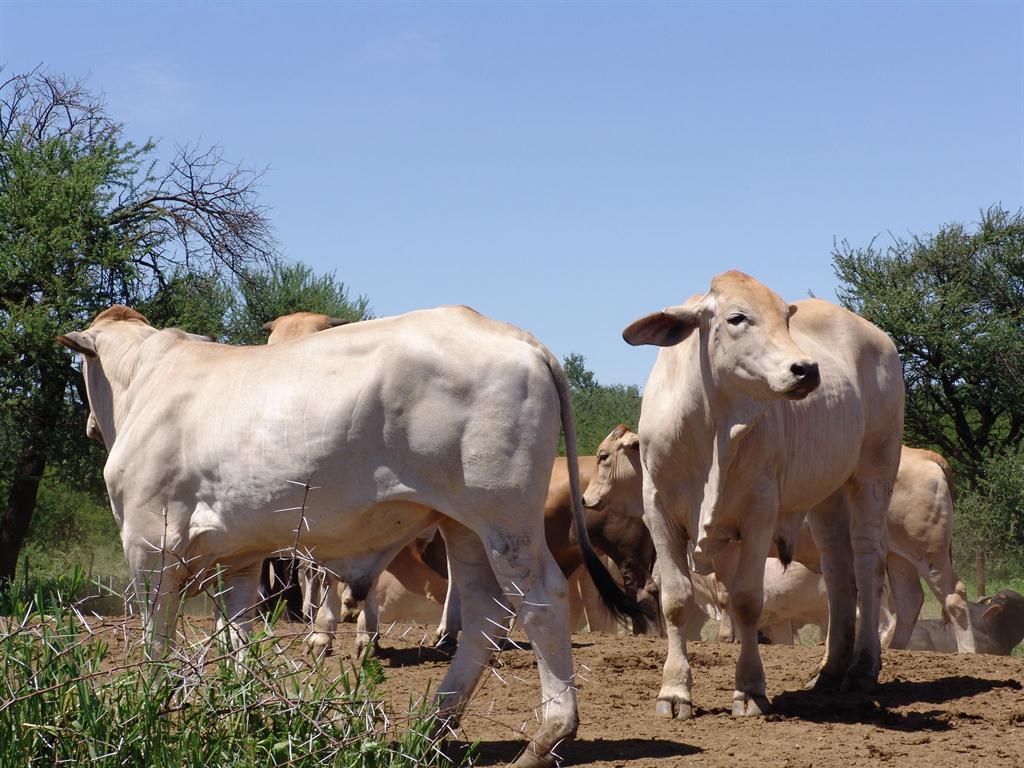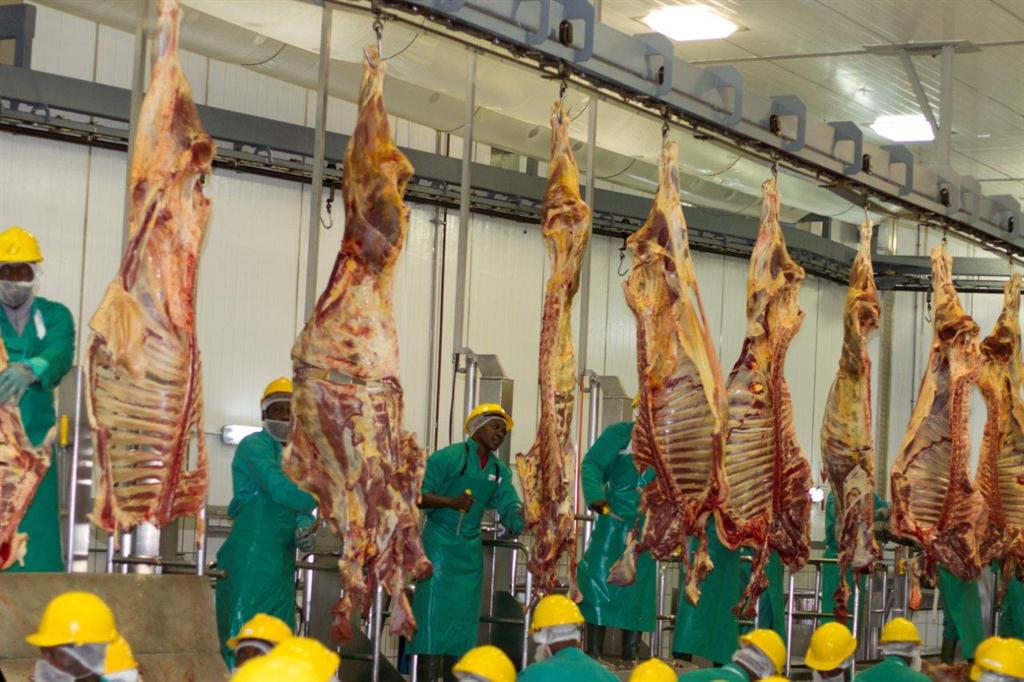Still dependent on export markets
Namibia’s meat industry, in particular Meatco, is still reliant on foreign markets for income as there is almost zero value addition at home.
Namibia is likely to remain dependent on export markets for beef, while it is unlikely that the local market will become a high-value earner for the country’s biggest beef producer.
According to Meatco’s latest annual report, the Namibian market is not a high-value earner for the company, accounting for 10.62% of actual sales in the reporting period, but 31.7% in terms of volume.
“Nonetheless, since Meatco needs the raw material, the cattle, provided by local producers to enable it to sell high-value cuts to its international clients, the Namibian market has high strategic value for Meatco.”
In terms of value, the international market accounted for 77.08% of Meatco's revenue and 44.27% of Meatco's total volume was exported to these markets.
According to agricultural expert Wallie le Roux, Namibia will remain dependent on export markets.
He explained that the company exports its premium cuts to international markets where it is able to receive a better price for these cuts.
In Namibia the company sells beef which is of a lower quality. “High-quality cuts are not marketed locally, because we are not willing to pay those high prices,” Le Roux said.
“It all has to with the price. If you start to sell high-quality cuts at an exorbitant price in the country the buyer will simply go to a place where the meat is cheaper. The problem is that we have excess meat in the country and therefore it needs to be exported.”
Le Roux said it will therefore be very difficult to turn Namibia into a high-value earner. “The only way this can happen is if there is a lot of value addition.”
Furthermore, the Meatco says that the unlocking of new markets such as Hong Kong, China and the UK, meant more value for producers and a broader market diversification for the company.
Meatco processed a total of 21 809 tonnes of meat for its markets during the reporting period, compared with 26 878 tonnes recorded the year. International markets account for 75.41% of the value of Meatco’s sales, while South Africa and Namibia combined, accounted for 22.9%.
Due to South Africa’s population size, income levels, and proximity, it remains a lucrative regional market for some of its beef products, receiving 12.28% of Meatco’s exports in the year under review.
With consecutive years of drought in Namibia, the impact was felt in the meat industry with declining cattle numbers available for slaughter. Meatco slaughtered 25 000 less cattle during the 2016/17 financial year from south of the red line in comparison to the previous year.
This is the first year that cattle for slaughtering decreased south of the red line.
It budgeted slaughtering just over 95 400 cattle during the reporting period, but ultimately slaughtered 91 558 cattle.
Meatco Board Chairperson Martha Namundjebo-Tilahun said that at the company’s AGM that Namibia, industry and the company is currently facing tough economic times.
She urged Meatco members to consider the sustainability of Namibians.
“Farming is not for the faint-hearted and with these conditions, we are seriously facing a real threat to the viability of being a producer under the prevailing market and economic conditions,” she said.
According to the report during the 2015/16 financial year 116 948 cattle south of the red line were slaughtered. However, this has decreased with 25 390 cattle year-on-year to 91 558 during the reporting period.
According to the report this is quite substantial.
Communal producers also delivered 1 682 cattle directly to a Meatco abattoir for slaughter.
According to the annual report the unfavourable climatic conditions and resultant water crisis in Namibia contributed to a challenging year for Meatco.
The company recorded a net profit for the year of N$19.2 million, while the revenue decreased by 8.5% year-on-year mainly due to less cold mass being processed in conjunction with the strengthening of Namibian dollar against other foreign currencies.
“In terms of volume, the company recorded an overall decrease of 21.7% from the previous year of the amount of cattle slaughtered south of the veterinary cordon fence.”
In addition, 53.12 % of all beef revenue was returned to producers in the form of the producer price.
According to the report the average weight and quality of cattle procured by Meatco has also declined year-on-year, with approximately 40% of the number marketed directly as C-grade cattle.
“Unfortunately, the situation impacts on the national herd as well, with quality declining due to drought and the herd shrinking by at least 15%. The effects of the drought will continue to be felt in the foreseeable future,” says the report.
Meanwhile the Mobile Slaughter Unit which started operating in August 2016, slaughtered just short of 750 cattle in the northern communal areas (NCA).
This represented a decrease in the number of cattle slaughtered compared with the previous year when the abattoirs in Katima Mulilo and Oshakati were still operational.
According to Meatco even though fewer cattle were slaughtered in the NCA, it is optimistic that once the Mobile Slaughter Unit is in production for a full year, the numbers will increase.
“The slaughtering unit will end the financial drain of approximately N$354 million over 25 years that the conventional abattoirs brought on the corporation. However, access to markets is a hindering factor in terms of slaughter numbers,” according to the report.
ELLANIE SMIT
According to Meatco’s latest annual report, the Namibian market is not a high-value earner for the company, accounting for 10.62% of actual sales in the reporting period, but 31.7% in terms of volume.
“Nonetheless, since Meatco needs the raw material, the cattle, provided by local producers to enable it to sell high-value cuts to its international clients, the Namibian market has high strategic value for Meatco.”
In terms of value, the international market accounted for 77.08% of Meatco's revenue and 44.27% of Meatco's total volume was exported to these markets.
According to agricultural expert Wallie le Roux, Namibia will remain dependent on export markets.
He explained that the company exports its premium cuts to international markets where it is able to receive a better price for these cuts.
In Namibia the company sells beef which is of a lower quality. “High-quality cuts are not marketed locally, because we are not willing to pay those high prices,” Le Roux said.
“It all has to with the price. If you start to sell high-quality cuts at an exorbitant price in the country the buyer will simply go to a place where the meat is cheaper. The problem is that we have excess meat in the country and therefore it needs to be exported.”
Le Roux said it will therefore be very difficult to turn Namibia into a high-value earner. “The only way this can happen is if there is a lot of value addition.”
Furthermore, the Meatco says that the unlocking of new markets such as Hong Kong, China and the UK, meant more value for producers and a broader market diversification for the company.
Meatco processed a total of 21 809 tonnes of meat for its markets during the reporting period, compared with 26 878 tonnes recorded the year. International markets account for 75.41% of the value of Meatco’s sales, while South Africa and Namibia combined, accounted for 22.9%.
Due to South Africa’s population size, income levels, and proximity, it remains a lucrative regional market for some of its beef products, receiving 12.28% of Meatco’s exports in the year under review.
With consecutive years of drought in Namibia, the impact was felt in the meat industry with declining cattle numbers available for slaughter. Meatco slaughtered 25 000 less cattle during the 2016/17 financial year from south of the red line in comparison to the previous year.
This is the first year that cattle for slaughtering decreased south of the red line.
It budgeted slaughtering just over 95 400 cattle during the reporting period, but ultimately slaughtered 91 558 cattle.
Meatco Board Chairperson Martha Namundjebo-Tilahun said that at the company’s AGM that Namibia, industry and the company is currently facing tough economic times.
She urged Meatco members to consider the sustainability of Namibians.
“Farming is not for the faint-hearted and with these conditions, we are seriously facing a real threat to the viability of being a producer under the prevailing market and economic conditions,” she said.
According to the report during the 2015/16 financial year 116 948 cattle south of the red line were slaughtered. However, this has decreased with 25 390 cattle year-on-year to 91 558 during the reporting period.
According to the report this is quite substantial.
Communal producers also delivered 1 682 cattle directly to a Meatco abattoir for slaughter.
According to the annual report the unfavourable climatic conditions and resultant water crisis in Namibia contributed to a challenging year for Meatco.
The company recorded a net profit for the year of N$19.2 million, while the revenue decreased by 8.5% year-on-year mainly due to less cold mass being processed in conjunction with the strengthening of Namibian dollar against other foreign currencies.
“In terms of volume, the company recorded an overall decrease of 21.7% from the previous year of the amount of cattle slaughtered south of the veterinary cordon fence.”
In addition, 53.12 % of all beef revenue was returned to producers in the form of the producer price.
According to the report the average weight and quality of cattle procured by Meatco has also declined year-on-year, with approximately 40% of the number marketed directly as C-grade cattle.
“Unfortunately, the situation impacts on the national herd as well, with quality declining due to drought and the herd shrinking by at least 15%. The effects of the drought will continue to be felt in the foreseeable future,” says the report.
Meanwhile the Mobile Slaughter Unit which started operating in August 2016, slaughtered just short of 750 cattle in the northern communal areas (NCA).
This represented a decrease in the number of cattle slaughtered compared with the previous year when the abattoirs in Katima Mulilo and Oshakati were still operational.
According to Meatco even though fewer cattle were slaughtered in the NCA, it is optimistic that once the Mobile Slaughter Unit is in production for a full year, the numbers will increase.
“The slaughtering unit will end the financial drain of approximately N$354 million over 25 years that the conventional abattoirs brought on the corporation. However, access to markets is a hindering factor in terms of slaughter numbers,” according to the report.
ELLANIE SMIT





Comments
Namibian Sun
No comments have been left on this article